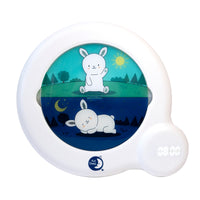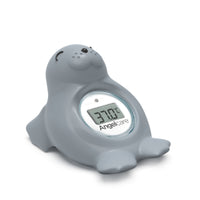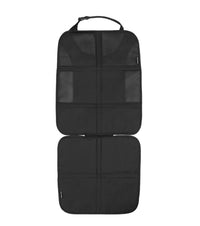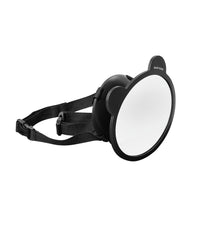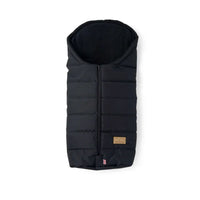
Child Car Seats and Long Journeys
Embarking on a long journey with your little one can be both exciting and daunting. Ensuring your child's safety and comfort in their car seat is paramount. As parents, we want peace of mind that our children are protected, while also making sure the trip is enjoyable for everyone involved. In this article, we'll explore essential tips and guidelines for using a child car seat on a long journey, focusing on the latest car seat safety standards and practical advice for parents.
Understanding Car Seat Safety Standards
When it comes to car seat safety, it's crucial to stay informed about the latest standards and regulations. Understanding these can help you make informed choices and ensure your child's safety during travel.
i-Size (R129): The Latest Standard - i-Size is the new European car seat standard that aims to improve child safety in vehicles. It mandates that children must travel in rear-facing car seats until they are at least 15 months old. This regulation is based on research indicating that rear-facing seats provide better protection for a child's head, neck, and spine during a collision.
ISOFIX: Simplifying Car Seat Installation - ISOFIX is a system that allows car seats to be securely attached to a vehicle's chassis without the need for seat belts. This system reduces the risk of incorrect installation, ensuring the car seat is securely fitted. Check your vehicle's manual to confirm if it is ISOFIX compatible and follow the instructions for installation carefully.
Choosing the Right Car Seat for Your Child
Selecting the appropriate car seat for your child's age, weight, and height is vital for their safety and comfort. Here's what you need to know:
Rear-Facing vs. Forward-Facing - For optimal safety, it is recommended that children remain in rear-facing car seats for as long as possible. Rear-facing seats better support a child's head and neck in the event of a sudden stop or collision. Once your child outgrows their rear-facing seat, you can transition them to a forward-facing seat with a harness.
Check out our article on this at https://chelseababy.com/blogs/news/forward-facing-vs-reward-facing-child-car-seats-the-pros-and-cons
Car Seat Laws and Regulations for the region
Familiarize yourself with the car seat laws specific to the region you are travel within. These laws dictate the minimum requirements for car seat usage based on your child's age, height, and weight. Adhering to these regulations is not only a legal requirement but also essential for your child's safety.
Always check out the Foreign office website for more details - https://www.gov.uk/foreign-travel-advice
Preparing for the Journey
Preparation is key to ensuring a smooth and stress-free journey. Here are some steps you can take to get ready:
Check the Car Seat Installation - Before setting off, double-check that your child's car seat is installed correctly. Ensure the seat is securely fastened using the ISOFIX system or seat belt, and that there is no excessive movement. The harness should fit snugly against your child's body.
Plan for Regular Breaks - Long journeys can be tiring for both you and your child. Plan for regular breaks every two hours to allow your child to stretch, move around, and take a break from the car seat. This will help prevent restlessness and discomfort during the trip.
The time between breaks should be reduced for babies, please review this brilliant article from Maxi-Cosi focusing on newborns - https://www.maxi-cosi.co.uk/c/long-car-journeys-your-baby-tips-safe-and-comfortable-travel-your-new-born-baby
Pack Essentials for Comfort and Entertainment - Bring along essential items to keep your child comfortable and entertained during the journey. This may include snacks, drinks, toys, books and a favorite blanket. Having these items on hand can help keep your child content and occupied, making the trip more enjoyable for everyone.
Tips for a Safe and Comfortable Journey
Ensuring your child's safety and comfort during the journey is crucial. Here are some additional tips to consider:
Dress Your Child Appropriately - Dress your child in comfortable, lightweight clothing that doesn't restrict their movement or interfere with the car seat harness. Avoid bulky coats or jackets, as these can create gaps in the harness and compromise safety. Instead, use a blanket to keep your child warm if needed.
Monitor Temperature and Ventilation - Keep an eye on the temperature inside the vehicle to ensure your child is comfortable. Use sunshades to block direct sunlight and prevent overheating. Adjust the air conditioning or heating as needed to maintain a comfortable environment.
Stay Attentive to Your Child's Needs - Pay attention to your child's cues and be responsive to their needs throughout the journey. If your child becomes restless or uncomfortable, take a break to address their needs. Keeping your child content and relaxed can make a significant difference in the overall experience.
Traveling with a child in a car seat requires careful planning and attention to safety details. By understanding car seat safety standards, choosing the right seat, and preparing for the journey, you can ensure a safe and comfortable experience for your child. Remember to stay informed about regulations and updates, and always prioritize your child's safety and comfort. With these tips in mind, you can embark on your long journey with confidence and peace of mind.


